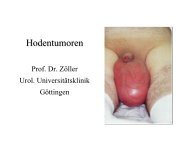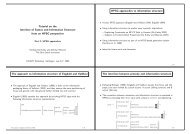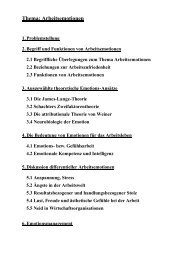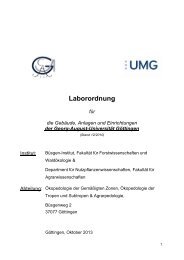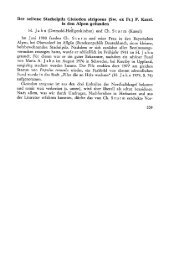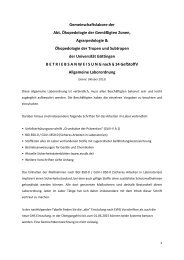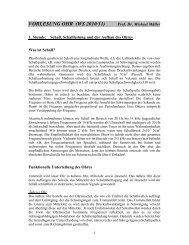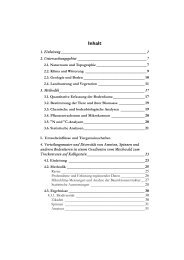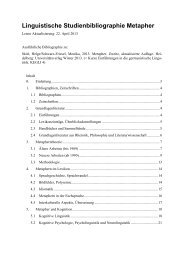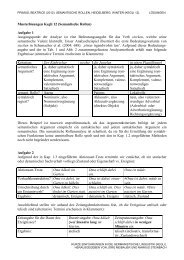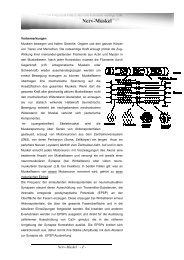REICHENBACHIA Staatliches Museum für Tierkunde ... - GWDG
REICHENBACHIA Staatliches Museum für Tierkunde ... - GWDG
REICHENBACHIA Staatliches Museum für Tierkunde ... - GWDG
You also want an ePaper? Increase the reach of your titles
YUMPU automatically turns print PDFs into web optimized ePapers that Google loves.
160 Reichenbachia Mus. Tierkd. Dresden 33. Nr. 22 (1999) (Festgabe 70. Geb. R. Rcrnane j<br />
0,1 mm<br />
Abb.11-16<br />
Figs. 11-16: Macropsisremanei ssi. n.: 1L 12-aedeagus, different 00: 13, 14 - genital style.rlifferent<br />
00: 15, 16 - pygofer appendage. different 00.<br />
The species is known to occur from Eastem Siberia to Sweden. Germany, France and Austria<br />
(ÄNUFRIEV & EMELJANOV 1988, NAST 1987). There are on1y few records from Central Europe (e.g.<br />
REMANE & DELLA GIUSTINA 1993, SCHIEMENZ 1987, NICKEL & REMANE 1996): little is known about<br />
its life history. In recent years, the author collected it in several localities in southern and eastern Gerrnany<br />
(Rhine Valley, Kaiserstuhl. Palatinate Hills, Main valley. Spreewald). It lives there as a pioneer<br />
species in sand pits, along fringes of ficlds, on fallow fields, and was even found in a Botanical garden.<br />
mainly on sandy, sornetimes also loamy soils. Specimens were exclusively collected on Equisetum<br />
arvense, sometimes in stands covering only few square meters and appearing to be strongly isolated.<br />
1. stali (METC.) has two generations per year and overwinters in larval stage. Brachypterous individuals<br />
predominated in most localities.<br />
Macropsis remanei sp. n.<br />
General appearance: Body shape resembling M. cerea (GERM.) and M. infuscata (J. SHLB.), but<br />
appearing more slender, head medially more angularly produced (Fig. L 2, 3, 4). Body length highly<br />
variable, 00: 4.0-4.6 mm (n = 40): 99: 4.5-5.2 mrn (n = 29).
NICKEL: Life stratcgics 01' Auchenorrhyncha species on river tloodplains in the northern Alps<br />
Abb.17-18<br />
17 18<br />
Figs. 17-18: Macropsis remanei sp. n.: second valvulae of ovipositor, different 99.<br />
Co I0 ura ti 0 n: Golden to sordid brownish, stronger pigmcntcd specimens sometimcs blackish<br />
brown. Plates ofthorax, tergites and sternites often blackish with light fringes. Fore and middle fernora<br />
and tibiae often, hind femora and tibiae always with black longitudinal streaks. Face usually with<br />
strong black markings (terminology after WAGNER 1950): Apical, thyridial, ocellar and discoidal spots<br />
usually prescnt, the pair of thc latter mcrging to an are in strongly pigmented specimens. Apical and<br />
ocellar spots may be reduced, in few cases completely without facial spots. Marginal and scutellar<br />
markings usually present. Formula ofmarkings (see WAGNER 1950) in most specimens 0: 1 I: F: 1 1<br />
112 1 or F: 1 101 (Fig. 6, 8, 9): sometimes 00 F: 0 1 0 1 or F: 1 1/2 1120 (Fig. 5, 7), 99 F: 1/2 10<br />
1 or F: 0000 (Fig. 10). Scutcllum in strongly pigmcntcd spccirnens with irregular black median streak,<br />
pronotum along fore border with small median and lateral black spots (Fig. 1). Fore wings dark yellowish<br />
brown to blackish, pigmentation often being stronger along apical and fore border. somcrimes with<br />
two incomplete transverse dark bands across middle and subapical parts (Fig. 4).<br />
Genital and song apparatus: Aedeagus in side view cornparatively slcndcr, the basal part being<br />
narrower than the median part (Fig. 1L 12), genital styles as in Fig. 13, 14 (not depressed under coverglass),<br />
pygofer processes as in Fig. 15, 16. Second valvulae of ovipositor with two or three apical teeth<br />
respectively (as in most Macropsis species), subapically with a more or less regular row of 9 to 11<br />
smaller teeth (Fig. 17, 18). Tergal apodemes of 00 lobiform to semi-oval, apically broadly rounded<br />
(Fig, 19,20). Sternal apodernes narrow and parallel-sided to triangular. the area enclosed by their inner<br />
margins fonning an open reetangle or an open ellipse (Fig. 21, 22, 23).<br />
Nymphs: Closely resembling those of M. cerea (GERM.) and not yet distinguishable (Fig. 24, see<br />
WAGNER 1950): reddish to blackish brown, tergites sometimes on both sides with two diffuse lighter<br />
brown longitudinal bands. Ridges of posterior tergites also light brown, those of anterior tergites<br />
blackish. Dorsal lobes oftergites in side view only little pronounced. Whole body densely covered with<br />
strong hairs.<br />
161
166<br />
Reichenbachia Mus. Tierkd. Dresden 33. Nr. 22 (] 999) (Festgabe 70. Geb. R. Remane)<br />
Table 1: Traits of life strategies of some Auehenorrhyneha speeies living on alpine river banks.<br />
Species Wing Generation Food plant Habitat Distribution<br />
lenzth number specificity specificity<br />
Pentastiridius beieri (W.WG.) m 1 po st Alps, Carpathians<br />
Pseudodelphacodes flaviceps (FIEB.) m/b 2 ml st Alps, endemie?<br />
Javesella stali (METe.) b/ün) 2 ml 01 Siberia, Europe<br />
Macropsis remanei sp. n. m 1 ml 01 Alps, endemie?<br />
Idiocerus vicinus MEL. m 1 ml eu Europe<br />
Opsius stactogalus FIEB. mIm1 eu western Palaearctic<br />
Mimallygus lacteinervis (KBM.) m1sb 1 m2? st Alps, Dinaric Alps<br />
Ophiola decumana (KONTK.) m 2? po? eu Siberia, Europe<br />
Psammotettix unciger RIB. m I? ml ? st northern Alps, endemie?<br />
Errastunus antennalis (HPT.) m/sb 2? o? st northem Alps. endemie?<br />
Abbreviations: m = macropterous, b = brachypterous, sb = subbrachypterous; ml = monophagous Ist degree (1 host<br />
plant species only), m2 = monophagous 2nd degree (1 host plant genus), 0 = oligophagous (1 host plant family),<br />
po = polyphagous; st = stenotopic, 01= oligotopic, eu = eurytopie<br />
4. Generalists with low host plant spccificity, oeeuring on various types of pioneer vegetation, e.g.<br />
Laodelphax striatellus (FALL.), Javesella obscurella (BOH.), Macrosteies sexnotatus (FALL.),<br />
M. cristatus (RIB.) and Psammotettix confinis (DHLB.). These species are abundant in whole Central<br />
Europe and large parts of the Palaearctie.<br />
Table 1 sumrnarizes the species rnentioned above and traits of their life strategies. Balclutha saltuella<br />
(KBM.) and Chloriona stenoptera (FL.) are not included, due to erratie reeords in Central Europe. Speeies<br />
living in disturbed and temporary habitats should show a stronger tendeney towards macroptery,<br />
higher generation number, polyphagy, broader range of habitats and larger distribution (NovOTNY<br />
1995, SOUTHWOOD 1988, TILMAN 1990, WARD 1992). This was demonstrated for the Auchenorrhyneha<br />
fauna oftemporarily drained ponds in Czeehia (KLIMES et al. 1991), newly-ereated polders in<br />
the Netherlands (SCHULTZ & MEIJER 1978) and intensively managed meadows in southem Germany<br />
(ACHTZIGER & NICKEL 1997).<br />
Life traits of speeies treated here are only partially in aeeordanee with eonditions found in other temporary<br />
habitats (see Table 1). All speeies are either macropterous or wing dimorphic, as was also found<br />
by DENNO et a1. (1991) and NOVOTN Y( 1994 a), although after wing length definitions ofOSSIANNILS<br />
SON ( 1983), 22 ofMimallygus lacteinervis (KBM.) and Errastunus antennalis (HPT.) would be termed<br />
sub-braehypterous. Regarding generation numbers, it appears that species, whieh live on grasses and<br />
forbs are mainly bivoltine, whereas those living on bushes are univoltine. This is in aeeordanee with<br />
predictions, but it should be noted that Salix and Mvricaria stands in these habitats are frequently inundated<br />
or even cornpletcly destroyed by floodings. While Macropsis remanei sp. n., Idiocerus vicinus<br />
MEL. and Opsius stactogalus FIEB. are also found in drier places, Pentastiridius beieri (W.WG.) and<br />
Mimallygus lacteinervis (KBM.) are confined to almost bare river banks, the former to taller, but almost<br />
dead bushes, the latter to very low-growing pioneer shoots.<br />
Generally, species inhabiting temporary habitats, e.g. drained pond bottoms and intensively managcd<br />
meadows, show a broad food plant range (NovOTNY 1994b, ACHTZIGER & NICKEL 1997). However,<br />
most ofthe speeies mentioncd here are monophagous (Table 1), with the exeeption ofOphiola decumana<br />
(KONTK.) and Pentastiridius beieri (W.WG.). Regarding abiotie conditions, e.g. soil qualities and<br />
moisture, habitat speeificity of most Central European Auehenorrhyneha species of disturbed habitats<br />
is generally low, provided the vegetation is in an early sueeessional stage. Habitats often range from<br />
salt meadows and ruderal places to eereal fields and intensively managed meadows (NICKELin prep.).<br />
However, Auchenorrhyneha communities on alpine river banks show a high proportion of species,<br />
whieh live stenotopic1y in this type of habitat. Speeies in temporary habitats tend to be widely distributed,<br />
as was proposed for Auehenorrhyneha by NOVOTNY (1991, 1995), e.g. several speeies ofJavesella,<br />
Macrosteies and Psammotettix. Some speeies living on banks of alpine rivers, however, have
NICKFI : Life strategies of Auchenorrhyncha specics on river floodplains in thc northcrn Alps 169<br />
SCHIEMENZ. H.. EMMRICH. R. & W. WITSACK (1996): Beiträge zur Insektenfauna Ostdeutschlands.<br />
Homoptera Auchenorrhyncha (Cicadina, Insecta). Teil IV: Unterfanlilie Deltocephalinae.<br />
Faun. Abh. Mus. Tierkd. Dresden 20: 153 - 258.<br />
SCHÖNI rZER. K. & U. OESTERLING (1998): Die bayerischen Zikaden der Zoologischen Staatssammlung<br />
München. ein Beitrag zur Faunistik der Homoptera. Teil 2: Cicadellidae. - Nachr.-BI.<br />
bayer. Ent. 47 (3/4): 62 -75.<br />
SCHULTZ. C.A. & J. MEIJER ( 1978): Migration of leafhoppers (Homoptera: Auchenorrhyncha) into a<br />
new polder. - Holarctic Ecol. 1: 73 -78.<br />
SOUTHWOOD. T.R.E. (1988): Tactics, strategies and ternplets. - Oikos 52: 3-18.<br />
TILMAN. D. ( 1990): Constraints and tradeoffs: toward a predictive theory of competition and succession.<br />
- Oikos 58: 3 -15.<br />
TISHECHKIN. D.Yu. (1998): New data on systematics of leafhoppers ofthe genus Macropsis (HOITIOptera.<br />
Cicadellidae) from eastem Russia and adjacent territories. Zool. Zh. 77 (4): 41 7- 430<br />
(in Russian).<br />
VILBASTE. J. (1971): Eesti tirdid I. Kirjastus Valgus. Tallinn.<br />
VILBASTE. J. (1974): Preliminary list of Homoptera - Cicadinea of Latvia and Lithuania. Ecsti NSV<br />
Tead. Akad. Toinlet. 23: 131-163.<br />
WAGNER. W. ( 1939): Die Zikaden des Mainzer Beckens. Jb. nass. Ver. Naturkd. 86: 77 - 212.<br />
WAGNER. W. (1950): Die salicicolen Macropsis-Arten Nord- und Mitteleuropas. Notul. Ent. 30:<br />
81-114.<br />
WAGNER. W. (1970): Oliarus beieri, eine neue Zikade aus den Alpen. Ann. Naturhist. Mus. Wien<br />
74: 281- 284.<br />
WARD. S.A. (1992): Environmental uncertainty and polyphagy in herbivorous insects. Oikos 63:<br />
506-5]2.<br />
WEBB. M.D. & J. VILBASTE (1994): Review of the leafhopper genus Balclutha KIRKALDY in the<br />
Oriental Region (Insecta: Homoptera: Auchenorrhyncha: Cicadellidae). Ent. Abh. Mus.<br />
Tierkd. Dresden 56 (3): 55 - 87.




